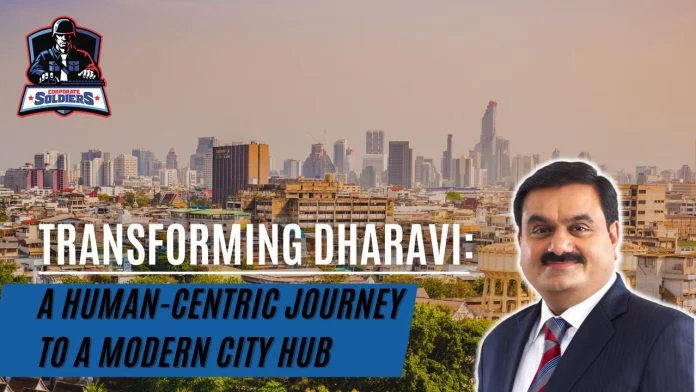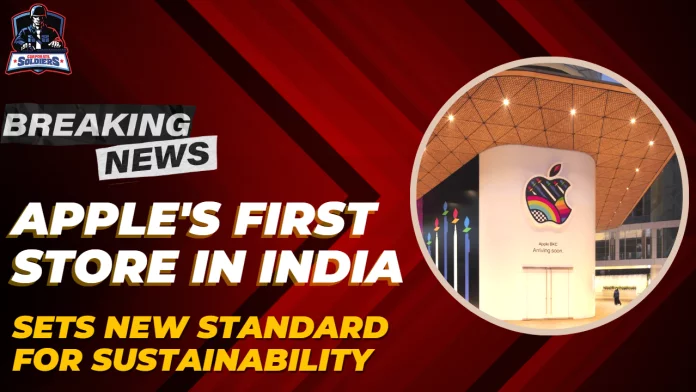Introduction:
In the bustling city of Mumbai lies Dharavi, a place that has captured the imaginations of many. Made famous by the acclaimed film “Slumdog Millionaire,” Dharavi is home to over 900,000 people and is one of the largest slums in the world. A transformative ambition, however, is on the horizon as billionaire entrepreneur and Chairman of the Adani Group Gautam Adani works to turn this rural area into a contemporary metropolitan hub. In this article, we explore Adani’s commitment to this project, the unique aspects of the redevelopment plan, and the potential impact on the lives of Dharavi’s residents.
Understanding the Vision:
Adani’s vision for Dharavi goes beyond mere redevelopment; it is about creating a state-of-the-art world class city that reflects the resurgent and self-assured India of the 21st century. His commitment to the project is rooted in creating a human-centric transformation, where the people of Dharavi are at the center of decision-making. Adani understands how crucial it is to maintain and advance neighborhood businesses and small industries, which have flourished in Dharavi’s distinctive diversity.
A Unique and Ambitious Project:
Three main factors make the Dharavi rehabilitation project exceptional. First of all, it involves the rehabilitation and resettlement of roughly a million people, making it one of the greatest urban resettlement and regeneration projects in the world. Second, it includes a variety of businesses engaged in trading, shopping, and other business activities in addition to residential units. The vibrant environment of diverse trades that makes Dharavi distinctive has to be preserved. Last but not least, the project aims to provide thorough and holistic redevelopment, meeting the housing and rehabilitation needs of both qualified and ineligible inhabitants, making sure that no one is left behind.
Empowering Livelihoods:
The redevelopment plan’s attempt to improve the lives of the locals’ residents faces many difficulties. Adani’s focus is on transforming Dharavi into a modern city hub by supporting and strengthening existing micro-enterprises and small industries, while promoting new-age jobs with a special emphasis on empowering youth and women. A multi-pronged plan that includes training centers for upskilling, common facility centers for entrepreneurship, research and development hubs, MSME support desks, and structured marketplaces will be developed with the help of sectoral specialists and civil society.
Preserving Dharavi’s Essence:
Adani is keen to retain the character of Dharavi, which has charmed many over the years, despite the enormous goal for transformation. He recalls his first meeting with Dharavi, which occurred in the late 1970s and created an enduring impression due to its inventive anarchy and ethnic diversity. Adani promises that while maintaining the timeless charm of the old Dharavi, the new Dharavi would maintain the spirit, unity in diversity, and tenacity that characterize Mumbai’s core character.
Promoting Inclusivity and Participation:
Adani admits that communication with stakeholders and locals is key to the project’s success. He supports a bottom-up strategy that incorporates the opinions and feelings of the Dharavi residents as well as the brightest minds and most considerate individuals of Mumbai into the redevelopment process. Adani intends to establish a formalized framework to record these opinions and guarantee that everyone will have a say in how the new Dharavi is shaped.
Conclusion:
The Adani Group’s ambitious proposal to rehabilitate Dharavi and transform it into a modern city hub is not just a real estate project; it is a testament to the power of vision and human-centric development. Gautam Adani’s commitment to the welfare of Dharavi’s residents, coupled with a determination to preserve its cultural fabric, promises to create a new Dharavi that hums with pride. The project’s influence extends beyond the physical makeover; it offers the chance to improve a million people’s lives by giving them access to better housing, sustainable livelihoods, and a better future. It will be interesting to watch how the initiative develops since it will show how public-private collaborations can lead to beneficial social change.










